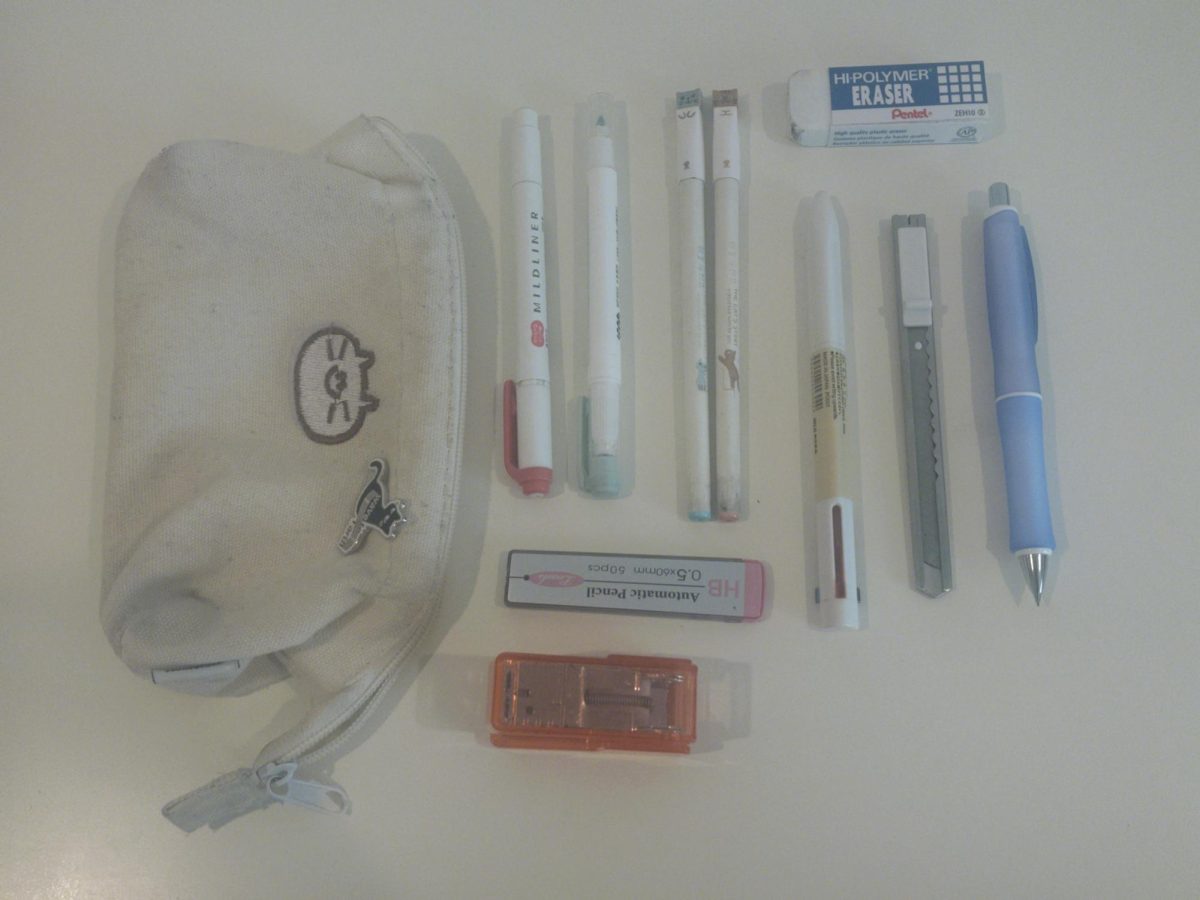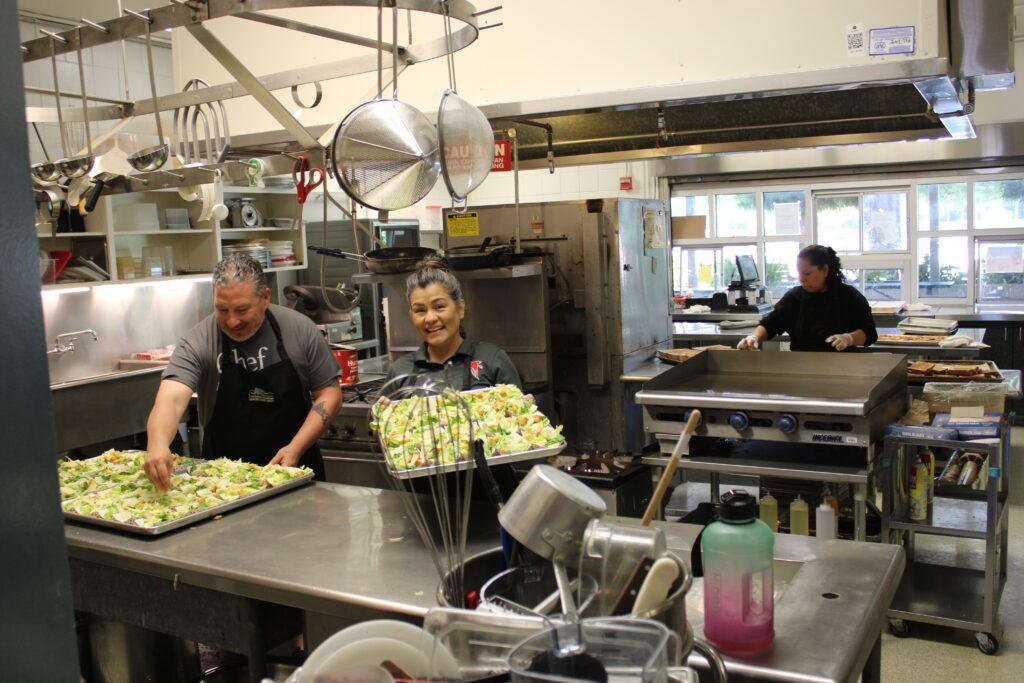Last September, a year after the cafeteria started providing free, nutritional meals, the Los Gatos-Saratoga Union High School District was awarded a $180,000 grant in recognition of the outstanding nutritional quality of its school meals. The grant money has since been used to fund equipment and supplies, improvements in nutritional quality and cafeteria staff training at both Los Gatos High and Saratoga High.
At the start of the 2022-23 school year, the cafeteria staff shifted from warming packaged, frozen burritos, chicken tenders and fries to creating their own meals daily from scratch in order to ensure that the food served is always fresh. Arriving at school between 5 a.m. and 8 a.m., workers start preparing meals for the current and following days until lunchtime, when they meet students for distribution.
According to cafeteria cook Joe Hernandez, in order to determine the menus for each week and provide a variety of meals for students, cafeteria chefs from either Los Gatos High or Saratoga High pick from a binder of recipes every week. Provided by Paul Boundas, a professional chef from Chicago who personally trained the cafeteria staff of both schools, the recipes are designed to be both tasty and healthy.
In the morning, breakfast specials, including crepes, pancakes, waffles, french toast and bagels, are rotated throughout the week, whereas meat and rice burritos, breakfast bowls and yogurt parfaits are always available.
In order to select lunch items for each day of the week, the cooks choose three food items from a list on Titan — a nutritional management software by LINQ. A fourth item is occasionally added as a special to experiment with potential dishes that may enter the cycle.
“We try to make a special every day and experiment with new dishes to see how [the new dish] turns out,” Hernandez said. “Let’s say we’ll make chicken or beef tacos as the special. We’ll maybe make 50 orders for a day and see if it works out.”
These food choices don’t always work out and have to be discontinued due to a variety of factors, ranging from their nutritional value to their cost. For example, the cookies served last school year were discontinued because California’s Universal Meals Program, in which they participate, does not allow for the serving of foods that do not comply with their nutritional standards. Popular meals like the chicken panini, on the other hand, were discontinued due their high cost, resulting in a lack of a state reimbursement for them.
Even though certain foods have been discontinued, workers try to ensure there are still plenty of tasty options, including for students who have dietary restrictions; an allergy form is needed in order for the cafeteria to make separate foods to accommodate them. For instance, if a student is lactose-intolerant, the cafeteria would make a bowl of nachos without cheese if they filled out the form. In addition, the cafeteria always serves vegetarian options along with its “with-meat” options.
In addition to the changes in the food they serve, the packaging and container materials used by the cafeteria have become progressively more eco-friendly and recyclable. For instance, in order to reduce its ecological footprint, the cafeteria has phased out the use of styrofoam cups, instead favoring compostable paper ones for items like tomato soup.
The materials in the cafeteria, including food, milk and containers, are delivered to school from distributors like Sysco Systems and Cheetah, according to cafeteria staffer Marivel Escobed.
Since the free lunch program has been implemented, Hernandez reports that an average of 570 students receive their meals from the cafeteria daily, with 450 students purchasing lunch and 120 students purchasing breakfast. As for the leftovers, there are usually 10-20 left, so some are offered to the teachers for free, and the eight cafeteria workers have the option to take home one or two of the leftovers at the end of each day.
For now, the cafeteria’s primary goal, dedicated to prioritizing students’ health, is to create all their food from scratch.
“Our plan is to try to make everything from scratch and keep food fresh,” Hernandez said. “Currently, I would say 80% of the stuff we do is from scratch, and we’re trying to get to 90%.”




























